Investing
New legislative changes to foster growth across various sectors: lawyer
Published
10 months agoon
The National Assembly, Vietnam’s legislature, in late November 2024 passed 18 new and amendment laws, along with 21 resolutions. Anh Dang, a senior partner at Vilaf law firm, offers an insight into key aspects of several new laws that will come into force in 2025 and their potential impact on business activities.

Anh Dang, a senior partner at Vilaf law firm. Photo courtesy of the law firm.
The initiatives introduced in the new and amendment laws, effective from 2025, are reportedly aimed not only at alleviating challenges in business activities but also at providing a legal framework for emerging issues such as data management, digital technology development, and the growth of nuclear and offshore energy sectors.
New Law on Electricity
One of the laws that garnered significant public attention is the new Law on Electricity (Law on Electricity 2024), which will take effect and replace the Law on Electricity 2004 (as amended) from February 1, 2025.
Under the Law on Electricity 2024, the State retains its monopoly over the dispatch of the national electricity system and operating the transmission grid, except for those built by non-state entities.
Additionally, the new law expressly provides that the State now holds a monopoly on investing in and operating nuclear power plants, multi-purpose strategic hydropower plants, and key transmission networks of 220 kV and above, as specified by the Prime Minister.
Compared to previous regulations, the Law on Electricity 2024 clarifies procedures for master planning, investment approval, and investor selection.
Specifically, three main methods of selection of investors for electricity business investment projects include: (i) selection of investors not through either land auction or bidding procedures, which shall apply to certain special projects like projects under state monopoly, emergency power projects – a concept newly introduced under the new law, and offshore wind projects; (ii) selection of investors through bidding procedure pursuant to regulations on bidding, including the recently-issued Decree No. 115/2024/ND-CP dated September 16, 2024 of the Government; and (iii) selection of investors through land use rights auctioning pursuant to the laws and regulations on land.
The Law on Electricity 2024 prioritizes the development of gas-fired power plants using domestic gas resources and liquefied natural gas (LNG) to gradually establish it as key energy sources, supporting the regulation of the electricity system.
The new law also outlines a high-level development policy for nuclear energy, and an amendment to the 2008 Law on Nuclear Power is expected soon to strengthen the legal framework for this sector.
Additionally, the Law on Electricity 2024 promotes investment in “new energy electricity” such as green hydrogen, green ammonia, and wind and solar power projects combined with energy storage systems.
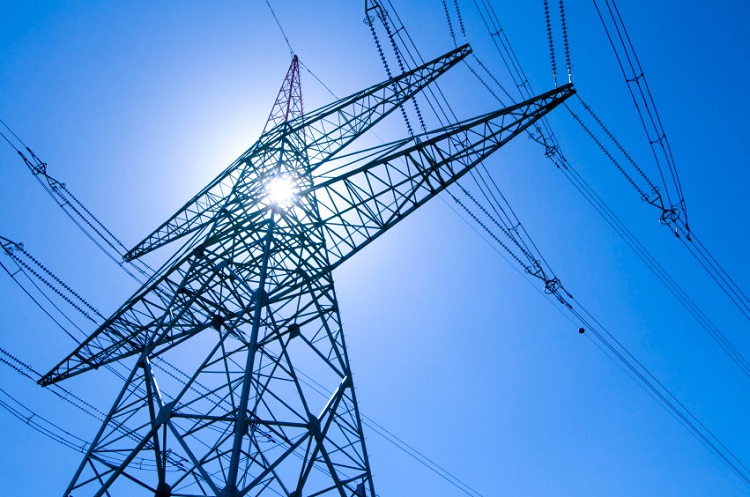
Power transmission lines in Vietnam. Photo courtesy of state utility Vietnam Electricity (EVN).
Notably, the new law outlines a section on offshore wind energy development, which encourages state investment in this sector by exempting wholly state-owned enterprises from investment project guarantee requirements and offering favorable credit limits for their investment in offshore wind projects.
While earlier drafts proposed restrictions on foreign investment, project transfers, and equity transfers in offshore wind projects, these have been removed in the final version.
However, the Law on Electricity 2024 stipulates that the government will provide detailed guidance on these issues, meaning further clarification is needed regarding the State’s stance on offshore energy and foreign investment opportunities.
New Law on Data
On November 30, 2024, the National Assembly passed the highly anticipated Law on Data 2024, which will take effect from July 1, 2025.
This landmark legislation establishes a comprehensive legal framework for data management and use, reflecting Vietnam’s commitment to developing its digital government infrastructure and advancing economic and societal growth.
The Law on Data 2024 establishes comprehensive regulations to streamline data collection, processing, storage, and sharing across state agencies, political-social organizations and other organizations.
It clearly defines the rights and responsibilities of key stakeholders, including data subjects, data owners, data custodians, and data users, to ensure accountability and transparency in data-related activities.
A central component of the Law on Data 2024 is the establishment of the National Data Center (“Trung tâm Dữ liệu Quốc gia” in Vietnamese), which will act as a hub for centralized storage, management and exploitation of the National Integrated Database (“Cơ sở Dữ liệu Tổng hợp Quốc gia” in Vietnamese).
Data to be collected, updated, and synchronized into the National Integrated Database include open data and shared data from national and specialized databases, proprietary data collected upon the Prime Minister’s decision to serve critical national objectives and tasks, open data published by governments of other countries and international organizations, as well as data acquired through international cooperation on data-related activities.
The Ministry of Public Security will lead the establishment of the National Data Center and coordinate with other ministries and agencies to set the operation framework for the center.
The new law also emphasizes the protection of important data and core data which could significantly affect national defense, security, economic activities, social stability, public health, and safety if unlawfully shared or processed.
Access to such data must be managed strictly through technical measures that can log timestamps and details of accessed data and allow authentication of the individual or entity accessing data.
Additionally, cross-border transfer of these data requires prior approval from competent state authorities and will be subject to continuous impact assessment and monitoring to prevent confidentiality risks.
New Law on Fire Prevention, Firefighting, Rescue and Salvage
On November 29, 2024, the National Assembly passed the new Law on Fire Prevention, Firefighting, Rescue and Salvage (the Law on FPF 2024), which shall take effect from July 1, 2025 and replace the Law on Fire Prevention and Firefighting 2001 (as amended) (the Law on FPF 2001).
It has been reported that the prevailing purpose of the Law on FPF 2024 is to streamline the administrative procedures and ease the business conditions in fire prevention and firefighting (FPF) activities.
In general, there are no major differences between the Law on FPF 2024 and old regulations regarding key FPF permits and requirements with which a facility must comply.
Mirroring the Law on FPF 2001, the Law on FPF 2024 requires that projects, construction works, and transportation vehicles (subject to their types and scale) have their own FPF design appraised (“thẩm duyệt thiết kế phòng cháy chữa cháy” in Vietnamese), conduct the FPF acceptance (“nghiệm thu phòng cháy chữa cháy” in Vietnamese) based on the appraised design before being put into operation and commercial exploitation, and fulfill other FPF requirements, such as (i) equipping the FPF, rescue and salvage vehicles and systems, (ii) setting up the FPF, rescue and salvage plan, and (iii) establishing the FPF, rescue and salvage forces at the facility level.
The Law on FPF 2024 introduces additional requirements for residential houses, mandating that those in areas with inadequate transportation infrastructure or water sources for firefighting in the five centrally-governed cities must equip fire extinguishers and fire alarm communication devices, in accordance with the schedule set by the Government.
Furthermore, residential buildings used for production and business must meet the following conditions: (i) display prohibition, warning, and guidance signs for fire prevention, rescue, and salvage; (ii) separate or protect areas with fire or explosion risks from residential spaces; and (iii) other conditions (such as equipping fire alarms, ventilation solutions, and gas leak detection devices for combustible or toxic gases in accordance with statutory standards and technical regulations) in case of involving production and business of goods that are hazardous in terms of fire and explosion.
Amended Law on Pharmacy
In the purpose of amending and supplementing several articles of the Law on Pharmacy 2016 (as amended), on November 21, 2024, the National Assembly officially passed the Law on Amendments and Supplements to the Law on Pharmacy (the Amended Law on Pharmacy 2024), which will take effect from July 1, 2025, except for specific provisions that will take effect from January 1, 2025.
The most critical changes introduced by the Amended Law on Pharmacy 2024 is the official recognition of (i) online sales of drugs and drug materials as a legitimate business activity; and (ii) pharmacy chains, defined as systems of pharmacies operated by the same entity under a unified quality management system and a single trade name, as a distinct type of pharmaceutical business.
It is anticipated that these recognition and regulations would solidify the legal framework on emerging business models and present investors in the pharmaceutical sector with new opportunities. It should be noted that:
– Online sales of drugs and drug materials must be conducted through an e-commerce trading platform, e-commerce sales application, or e-commerce website with an online ordering function.
Moreover, the online sale of drugs is permissible for (a) the retail of over-the-counter drugs (except in cases of quarantine for infectious diseases in Group A that have been officially declared under applicable laws on disease prevention and control); and (b) the wholesale of drugs and drug materials not subject to special control. Any businesses engaging in e-commerce sales of drugs must notify relevant authorities, offer online consultation on drug use, and ensure proper delivery to buyers in accordance with laws.
– Each pharmacy/drugstore within the chain must obtain a separate Certificate of Eligibility for Pharmaceutical Business (CEPB) while the entity organizing the pharmacy chain shall be issued with the CEPB upon meeting legal requirements, including having at least two pharmacies/drugstores in the chain with their own CEPB.
Moreover, the person responsible for pharmaceutical expertise of the entity organizing the pharmacy chain must meet conditions required for the same position in a drug wholesale establishment, while the person responsible for pharmaceutical expertise at each pharmacy/drugstore in the chain must meet conditions for the same position in a drug retail establishment.
Before the Amended Law on Pharmacy 2024, the rights and obligations of foreign-invested enterprises (FIEs) in pharmaceutical sector are scattered across regulations like Decree No. 54/2017/ND-CP and Circular No. 34/2013/TT-BCT, which limit FIEs’ scope of activities to importing drugs and drug materials not on the List of drugs prohibited from import and distributing those produced in Vietnam by such FIEs.
The Amended Law on Pharmacy 2024 has clarified the rights and obligations of FIEs engaging in trading pharmacy, producing or importing drugs and drug materials, and the new law has also expanded FIEs’ scope of activities to also include, among others, selling drugs that they import, produce, contract for manufacturing, or transfer technology in Vietnam to specific transferees as specified at laws.
Furthermore, the Amended Law on Pharmacy 2024 streamlines the licensing procedures regarding Certificate of Drug Free Sale and Certificate for Drug Material Free Sale and eliminates requirements for drug information content confirmation. Certain regulations on price management and declaration have also been revised to align with the laws and regulations on pricing.
Amended Law on Health Insurance
On November 27, 2024, the National Assembly adopted the law amending and supplementing a number of articles of the Law on Health Insurance 2008 (as amended) (the Amended Law on Health Insurance 2024), which is set to take effect on July 1, 2025.
A key highlight of the Amended Law on Health Insurance 2024 is the alignment with regulations under the Law on Social Insurance regarding (i) participants of the health insurance scheme, (ii) timeframes to make contributions to the health insurance fund, (iii) basis for calculation of contribution to the health insurance fund in case an employee has contracts with multiple employers, and (iv) cases considered as late or evaded contribution to the health insurance fund and penalties in those cases.
These changes will streamline the procedures for employers to make contributions to different mandatory insurance funds, making the system more efficient and accessible to employers.
The Amended Law on Health Insurance 2024 also extends health insurance coverage to more medical services. Notably, it includes treatments for strabismus and refractive errors for individuals under the age of 18 years old, extending coverage from the current limitation for those under the age of 6 years old.
The amended law also improves insurance coverage for patients seeking care outside their registered facilities and without complying with regulations on referral of patients between medical facilities.
Key improvements include full coverage within the entitlement limits for emergency treatments at any medical facility nationwide, as well as full coverage within the entitlement limits for treatment of rare diseases, serious illnesses, or advanced surgical procedures at any medical facility with basic or intensive expertise.
In addition, patients visiting a medical facility with basic expertise will receive full coverage for inpatient treatments within the entitlement limits.
Another important update is the reallocation of the health insurance fund. The proportion allocated to medical services has been increased from 90% to 92%, while the contingency reserve has been reduced from 10% to 8%.
This change ensures that a larger share of the health insurance funds is directed towards patient care, reflecting the government’s focus on improving access and quality of healthcare services.
Law amending, supplementing the Law on Planning, the Law on Investment, the Law on Private-Public Partnership Investment, and the Law on Bidding
With the purpose of facilitating the decentralization and delegation of authority for meeting administrative reform requirements and practical situations, on November 29, 2024, the National Assembly adopted the Law on amendments and supplements to the Law on Planning 2017, the Law on Investment 2020, the Law on Private-Public Partnership (PPP) Investment 2020, and the Law on Bidding 2023 and their respective amendments (the Amendment to 04 Laws).
Regarding amendments to the Law on Investment 2020, one of the most revolutionary aspects under the Amendment to 04 Laws is the introduction of a new special investment procedure for projects which are (i) in certain eligible sectors (such as the construction of innovation centers, research and development centers, and projects in industries like semiconductor integrated circuits, technology design, and component manufacturing); and (ii) located in industrial parks, export processing zones, high-tech zones, and functional areas within economic zones.
In the absence of an Investment Policy Decision (IPD) from the National Assembly is required in accordance with the Law on Investment 2020, these projects would benefit from an exemption from IPDs and key permits such as environmental, construction, and FPP ones. Instead, investors can directly apply for an investment registration certificate at the management board of the special zone where the project is located. This groundbreaking change is expected to encourage investments in emerging sectors.
Under the Amendment to 04 Laws, the authority to approve IPDs for (i) projects of constructing and trading industrial zone and export processing zone infrastructure; and (ii) projects of constructing new ports and wharves at specialized seaports with investment capital up to VND2,300 billion ($90.62 million) has been transferred from the Prime Minister to the provincial People’s Committees.
Additionally, to ensure compliance with national level master planning, the Amendment to 04 Laws now requires the appraisals for issuing IPDs to include an assessment of the project’s alignment with zone planning, in addition to national, regional, urban, and special economic plannings. If zone planning is not available, the conformity with the general plan must be evaluated instead.
Regarding amendments to the Law on Planning 2017, the Amendment to 04 Laws introduces a streamlined procedure specifically for adjustment of plans in several circumstances (such as for implementing resolutions of the National Assembly, its Standing Committee, or the Government regarding administrative unit reorganization or national important projects that trigger planning adjustment), allowing for quicker revisions without altering core principles.
Additionally, the Amendment to 04 Laws promotes decentralization by shifting the appraisal of provincial planning tasks to the Ministry of Planning and Investment, while provincial People’s Committees now manage the issuance of schemes for implementing provincial plans. Finally, the amendment law revises the approach to priority projects in national and regional plans, shifting from fixed lists to proposed priority projects to provide greater flexibility.
Regarding amendments to the Law on PPP Investment 2020, the Amendment to 04 Laws expands the sectors eligible for PPP investment to include all public investment sectors aimed at providing products or services, excluding those under State monopoly or related to national defense, security, public order.
Another notable change is the reinstatement of Build0Transfer Contract (BT) model, which was removed from permissible PPP project models in 2021 due to issues with inaccurate valuation and inadequate quality.
Compared to existing regulations which limit the State capital contribution to a PPP project to 50% of the total project investment with no exceptions, the Amendment to 04 Laws now permits the Prime Minister or the provincial People’s Council (as the case may be) to increase the cap up to 70%, provided that the projects fulfill conditions required by laws.
Furthermore, the Amendment to 04 Laws outlines certain changes to facilitate PPA investments, including (i) abolishing minimum total investment requirements for PPP projects, (ii) increasing the investment capital threshold requiring IPDs from VND10,000 billion to VND30,000 billion ($1.18 billion), and (iii) delegating the provincial People’s Committees with authority to approve IPDs for PPP projects within their local jurisdiction with total investment capital equivalent to those of Group B projects and not using state capital.
Regarding amendments to the Law on Bidding 2023, the Amendment to 04 Laws introduces additional scenarios that are eligible for the method of contractor selection by competent authorities.
These scenarios include, among others, (i) the selection of legal counsel to provide services for the protecting rights and interests of the Vietnamese State and state agencies at foreign agencies investigating the application of trade remedies and at international and foreign dispute resolution bodies, and (ii) bidding packages for services from international credit rating agencies, global financial transaction platforms exclusively provided by SWIFT, and services from companies providing financial and monetary information and trading platforms.
Notably, the Amendment to 04 Laws now allows (i) foreign contractors to participate in domestic bidding for packages involving ODA funds or concessional loans from foreign sponsors, (ii) multiple direct procurement transactions for the purchase of retail drugs at medical examination and treatment facilities, and (iii) the adoption of either single-stage two-envelope or single-stage one-envelope method for selection of contractor in non-consultancy services, goods procurement, construction, and mixed bidding packages requiring advanced technical expertise. Previously, only the single-stage two-envelope method was permitted in such cases.
Law amending, supplementing the Law on Securities 2019 and other 8 different laws
On November 29, 2024, the National Assembly passed the Law on amendments and supplements to nine laws including, among others, the Law on Securities 2019 (as amended) (Amendment to 09 Laws).
Among the amendments introduced by the Amendment to 09 Laws, specific changes to the Law on Securities 2019 are expected to attract foreign investment on securities market, as well as to enhance market transparency and investor protection following the uncovering of recent stock manipulation cases.
In particular, foreign individuals and entities are now automatically classified as “professional securities investors” (“nhà đầu tư chứng khoán chuyên nghiệp” in Vietnamese), without being subject to any additional requirements. Institutional professional securities investors will be entitled to trade all privately-placed corporate bonds.
Meanwhile, individual professional securities investors will be entitled to trade privately-placed corporate bonds of which the relevant issuers (i) have been credit-rated and (ii) have provided secured assets to back the bond issuance or obtained guarantees from a credit institution.
The scope of prohibited manipulative activities in the securities market under Article 12.3 of the Law on Securities 2019 has been expanded to cover acts such as (i) trading securities without actual transfer of ownership or within a closed group of traders in an attempt to establish artificial demand and/or supply and prices, (ii) trading securities at mass volume to manipulate opening and/or closing prices, and (iii) disseminating opinions on securities and/or issuers to influence securities prices while holding them.
Stricter requirements for companies seeking to go public or maintain public company status have also been introduced. Applicants for an initial public offering or public company designation must provide audited reports of their contributed charter capital for the past 10 years.
If they have been incorporated for less than 10 years, an audited report from the date of incorporation must be submitted. Public companies must maintain a minimum equity capital of VND30 billion ($1.18 million), failure to do so may result in revocation of their public company status.
These measures address issues such as those seen in FLC Faros scandal, where fabricated capital contributions were used to inflate the company’s valuation during its public offering in 2016.
Concluding words
While the recent legislative changes passed by the National Assembly of Vietnam in late November 2024 represent considerable progress in addressing contemporary challenges and fostering growth across various sectors, businesses and investors remain eager for further clarity.
Many of the newly introduced laws, such as the Law on Electricity 2024, require additional guidance through updated decrees and circulars, particularly regarding the practical application of key provisions.
For example, while the Law on Electricity 2024 sets the stage for offshore energy development, it delegates the responsibility of detailing the conditions for foreign and private sector participation to the Government.
This gap highlights the need for more specific regulations to ensure that businesses can fully leverage the opportunities presented by these legislative reforms. As the government finalizes these details, stakeholders will be watching closely to understand the full scope of these laws’ impact on investment and business operations.
You may like
-


Vietnam’s Exclusive Economic Zone boasts over 1,000 GW of wind power potential: report
-
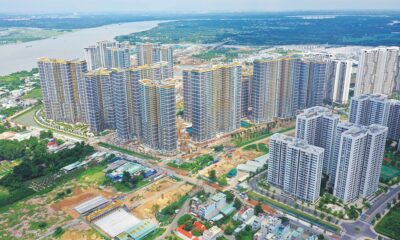

Uncertainty weighing on real estate
-


Central Vietnam city seeks $1.84 bln for 15 projects in economic zone
-
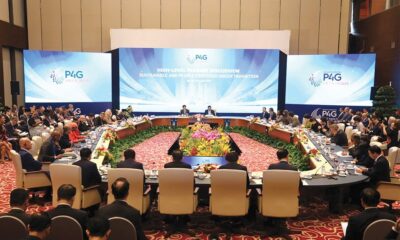

Green engagement rides high in Vietnam
-
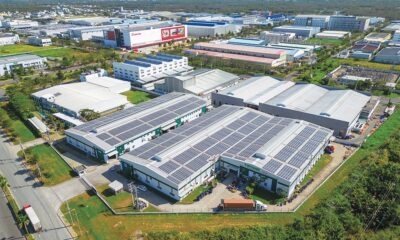

New standards being reached within green industrial parks
-
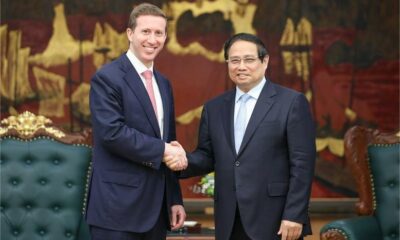

Vietnam PM asks Warburg Pincus to invest ‘further and faster’
Investing
Bac Giang International Logistics Centre launched
Published
8 months agoon
April 27, 2025Bac Giang International Logistics Centre was launched on April 22 with an investment of $168 million, and is expected to become a crucial link in the global supply chain.
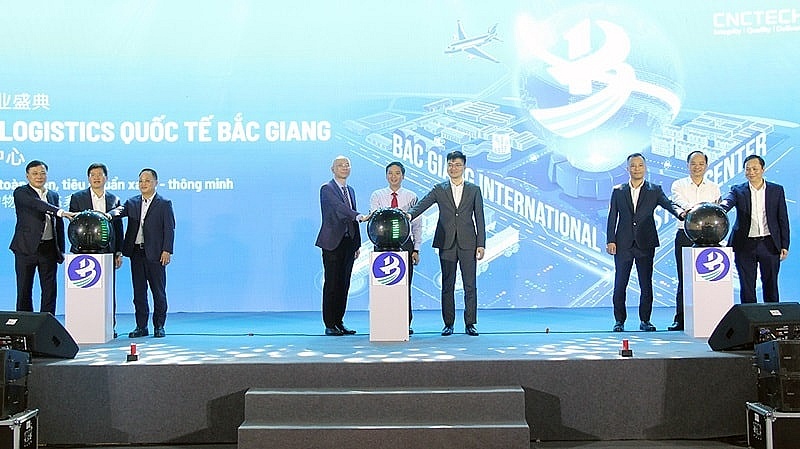 |
| Bac Giang International Logistics Centre launch |
Being invested by CNCTech Group, Dolphin Sea Air Services Corporation and Thien An Investment JSC, the logistics centre is located on National Highway 1A, which boasts first-class warehouse supply to meet the growing demand in the northern Vietnamese market.
Its strategic position within the golden economic triangle of Hanoi – Haiphong – Quang Ninh provides convenient connectivity to industrial zones and key logistics centres via national highways No.1A and No.37.
The centre is designed to meet growing demand for logistics infrastructure from businesses in Bac Giang and neighbouring provinces, positioning the area as a new node in northern Vietnam’s logistics network.
The project is a strategic product as a key component of the logistics spearhead in CNCTech Group’s industrial and logistics infrastructure ecosystem. It has been approved by the prime minister as a national level-II logistics centre, covering a planned area of 67 hectares.
At the launch ceremony, Chairman of Bac Giang People’s Committee Nguyen Viet Oanh said, “In recent years, the province’s socioeconomic development has made remarkable strides. Transportation, urban, industrial, and social infrastructure have been synchronously invested in and have yielded high efficiency. However, the province’s logistics service sector has not yet matched its potential, advantages, and socioeconomic development level. The logistics system remains fragmented, transportation costs are high, and trade delivery times are prolonged.”
Recognising this bottleneck, the local authorities have focused on directing the robust development of the logistics system, incorporating it into the provincial plan. This includes developing eight comprehensive logistics centres covering nearly 500ha, three inland container depots, and 33 inland waterway ports.
“Bac Giang, with its strategic location between Hanoi and border provinces, has long been known as a dynamic industrial hub. The remarkable development of the province’s industrial parks has created a solid foundation for the establishment of Bac Giang International Logistics Centre. This centre is not only located on vital transportation routes such as Hanoi-Lang Son Expressway but also directly connects to major border gates, optimising the transport of goods from Bac Giang to the world,” said Oanh.
 |
| A model of the logistics centre |
The project is not merely a warehousing facility, but also a symbol of the integration of modern infrastructure and advanced technology. The centre includes multifunctional warehouse areas, customs-controlled warehouses, non-tariff warehouses, and automated warehouses, meeting the needs of various industries. Notably, it integrates end-to-end logistics solutions, supporting businesses in optimising transportation costs and enhancing production efficiency.
With a long-term vision, the centre aims not only to optimise domestic supply chains but also to become a key connection point in the global logistics network.
Nguyen Van Hung, chairman of the Board of Members of CNC Tech Group, shared, “The establishment of this centre is a strategic step in developing Vietnam’s logistics infrastructure. We are committed to long-term and robust investment in this sector, as logistics is not just infrastructure but an indispensable part of enhancing the competitiveness of Vietnamese businesses on the international stage.”
Vietnam has taken strong action to promote green development among businesses, amid the country facing challenges in finance and technology.
Vietnamese Party General Secretary To Lam told the fourth Summit of the Partnering for Green Growth and the Global Goals 2030 (P4G), organised last week in Hanoi, that Vietnam is focused on strategic breakthroughs to prepare for a national development process that is fast, inclusive, and sustainable.
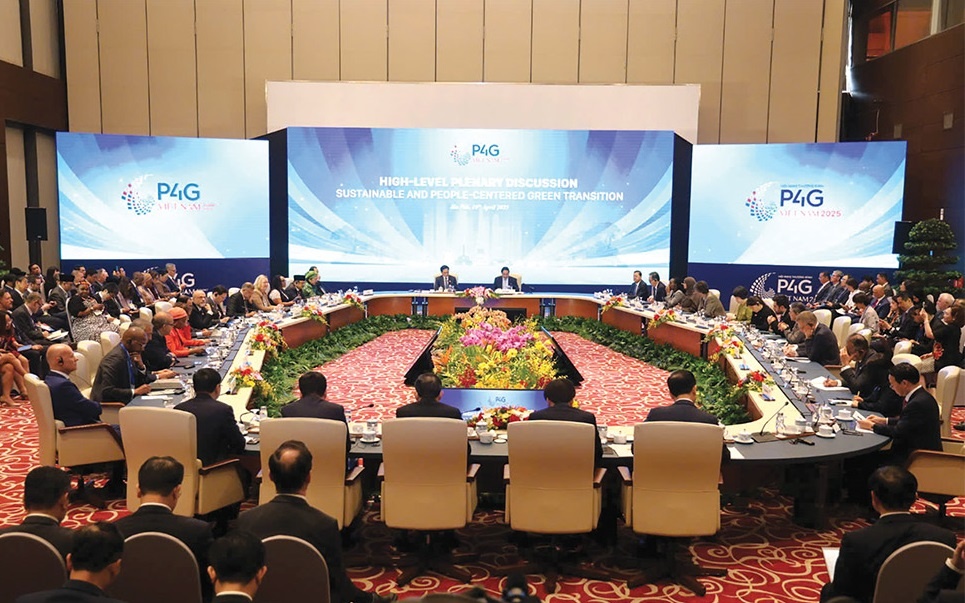 |
| The summit in Hanoi covered areas from finance and banking to agriculture and technology Photo: Dung Minh |
“We will strongly transform political commitments into practical actions, creating motivation for businesses and the whole society to participate in sustainable economic development, in which green institutions are the decisive foundation,” General Secretary Lam stressed at a hall attended by government leaders, UN representatives, diplomats, experts, and entrepreneurs.
General Secretary Lam also stressed that when it comes to green transformation, despite being a developing country with a transitional economy and limited resources, Vietnam has achieved some important results.
Besides making a 2050 net-zero commitment in 2021, Vietnam also endorsed six global initiatives at the time, on forest and land use, methane, clean power transition, sustainable food and agriculture, and more.
“Vietnam is now a leading country in supplying renewable energy in ASEAN, with wind and solar power capacity accounting for two-thirds of ASEAN’s total capacity,” he said.
“Additionally, Vietnam is also a good example of encouraging sustainable agriculture. The initiative to develop one million hectares of high-quality and low-emission specialised rice is a pioneering model that many partners and international organisations are interested in.”
A greener future
Vietnam is an active and responsible member of all multilateral mechanisms and major initiatives on green growth and energy transition such as the Paris Agreement on climate change, the Just Energy Transition Partnership, and the P4G.
“However, as a developing country with a transitional economy, we also face many challenges in terms of financial resources, technology, personnel, and resilience to the impacts of climate change and geopolitical fluctuations globally,” said General Secretary Lam.
The summit adopted the Hanoi Declaration, strongly affirming commitments to sustainable growth with people at the centre, and a determination to collaborate responsibly in addressing current global challenges. Vietnam is expected to enjoy continued support from the international community in its journey to a green economy including energy transition.
According to the World Bank, to ensure sufficient funding for responding to climate change, mobilising domestic finance is possible, but external support is needed.
Overall, Vietnam’s total incremental financing needs for the resilient and decarbonising pathways could reach $368 billion over 2022–2040, or approximately 6.8 per cent of GDP per year.
The resilient pathway alone will account for about two-thirds of this amount, as substantial financing will be required to protect the country’s assets and infrastructure as well as vulnerable people.
The cost of the decarbonising pathway will mainly arise from the energy sector – investments in renewables and managing the transition away from coal might cost around $64 billion between 2022 and 2040. All the figures are in net present value terms at a discount rate of 6 per cent.
This $368 billion in financing needs will include $184 billion from private investments or about 3.4 per cent of GDP annually, $130 billion or about 2.4 per cent of GDP annually from the state budget; and $54 billion or about 1 per cent of GDP per year from external sources.
Choi Youngsam, South Korean Ambassador to Vietnam, said that within the P4G framework, South Korea and Vietnam have completed or are currently implementing joint projects in areas such as food and agriculture, energy, water, and urban development.
“Looking ahead, both sides are expected to broaden and deepen their partnership under the P4G framework,” he said.
At the P4G Summit held in Seoul in May 2021, the two governments signed the Framework Agreement on Cooperation in Response to Climate Change, laying a solid policy foundation for the implementation of international emissions reduction ventures.
“On this basis, I hope that South Korea will leverage its technological expertise and financial resources to carry out greenhouse gas emission reduction projects in Vietnam, with both countries mutually recognising the results,” Ambassador Youngsam said.
“This would contribute to establishing a win-win model of emissions reduction cooperation. At the same time, I look forward to seeing active engagement from South Korean enterprises possessing green technologies, in close collaboration with the Vietnamese government.”
Encouraging developments
Deputy Minister of Science and Technology Hoang Minh said at a policy dialogue on the sidelines of the P4G 2025 that the active participation and strong cooperation from stakeholders – from the public and private sectors to international organisations – can help materialise Vietnam’s aspiration of an efficient and sustainable innovative startup ecosystem.
“Innovation, creative entrepreneurship and collaboration are key to solving environmental problems, while encouraging the development of a circular economy,” he said.
Vietnam currently has over 4,000 innovative startups, including two unicorns valued at over $1 billion, 11 companies valued at over $100 million, more than 1,400 startup support organisations, 202 co-working spaces, 208 investment funds, and 35 business promotion organisations. Among these, it is estimated that around 200–300 companies focus on green transition, covering areas such as renewable energy, environmental technology, sustainable agriculture, and the circular economy.
According to the Vietnamese Ministry of Foreign Affairs, hosting the fourth P4G Conference is of great significance to Vietnam. It is aimed to boost its role as a good friend, a reliable partner, and a responsible member of P4G and the international community. Moreover, it is also aimed to reaffirm its commitment to sustainable development, energy transition, and the goal of carbon neutrality by 2050. Besides that, it is aimed at contributing to raising awareness of international cooperation and encouraging the role and voice of developing countries in the sector of green growth and sustainable development.
| Pham Minh Chinh, Prime Minister
For Vietnam, together with digital transformation, we identify green transition as an objective necessity, a key factor, and a breakthrough driving force to promote rapid growth and sustainable development. This aligns with the strategic goal of becoming a developing country with modern industry and upper-middle income by 2030, and a developed, high-income country by 2045, while also contributing to the gradual realisation of Vietnam’s commitment at COP26 to achieve net-zero emissions by 2050. From practical experience with initial positive results, especially in renewable energy, green agricultural development, and participation in multilateral mechanisms and initiatives on green transformation, as the host of the fourth P4G Summit, Vietnam has three suggestions for discussions which pave the way for further cooperation in the coming time. First is to perfect green mindset, with a focus placed on the development of science and technology, innovation, and digital transformation linked to green growth. This includes recognising that green resources stem from green thinking, green growth is driven by green transition, and green resources arises from the green awareness of people and businesses in nations and regions throughout the world. Second is to build a responsible green community, in which, the government plays a guiding role, encouraging, and ensuring a stable and favourable institutional environment for green growth. The private sector functions as a core investor into technological development and the dissemination of green standards. The scientific community take the lead in developing green technologies and training green human resources. Meanwhile, citizens continuously enhance their green awareness, truly becoming beneficiaries of the outcomes of green transformation. Thirdly, it is necessary to promote international cooperation and robust multilateral green cooperation models, particularly public-private partnerships, South-South cooperation, North-South cooperation, and multilateral cooperation frameworks. This is aimed at removing institutional barriers, enhancing access, and speeding up the flow of green capital, green technology, and green governance. Developed countries should take the lead in fulfilling commitments to provide financial, technological, and institutional reform support. Meanwhile, developing countries would need to leverage their internal strengths and effectively utilise external resources. |
Investing
Public-private partnerships a lever for greener innovation
Published
8 months agoon
April 26, 2025Public-private partnerships are no longer a supporting mechanism, but a strategic pillar in the global pursuit of the green transition.
The high-level dialogue between government leaders and businesses at the 2025 P4G Vietnam Summit last week, chaired by Prime Minister Pham Minh Chinh, brought together senior officials, global experts, international organisations, and private sector leaders.
They recognised that the climate crisis, digital transformation, and resource depletion are converging in ways that demand not only innovation, but deep and long-term collaboration between the public and private sectors.
UN Deputy Secretary-General Amina J. Mohammed acknowledged Vietnam’s leadership in renewable energy, noting its potential to attract trillions in sustainable investment.
“Emerging economies must accelerate the adoption of new investment models, particularly those that align private capital with green infrastructure priorities. Governments must work with the private sector to expand ambition, strengthen accountability, and deliver real impact,” she said.
From Italy, Prime Minister’s Climate Envoy Francesco Corvaro stressed that public-private partnerships (PPPs) are indispensable in addressing climate finance gaps. Drawing from Italy’s experience, he underscored the importance of public investment as a risk mitigator, enabling private sector participation in clean energy and smart infrastructure projects.
“Public investment can unlock private capital, but local authorities must lead with clear priorities and long-term vision,” Corvaro noted. “You can’t talk about renewables, AI, or digital infrastructure without modern, resilient grids, and that requires strong public-private alignment.” he said
Alejandro Dorado, Spain’s High Commissioner for Circular Economy, argued that the case for stronger PPPs lies at the intersection of two accelerating forces: the environmental-climate crisis and a wave of disruptive technologies.
“In a world where AI, green technologies, and digitalisation are reshaping the global economy, the clock is ticking. According to the Intergovernmental Panel on Climate Change, we have less than a decade to prevent irreversible climate disaster. Meanwhile, the World Economic Forum has identified biodiversity loss as one of the most severe economic risks,” he said.
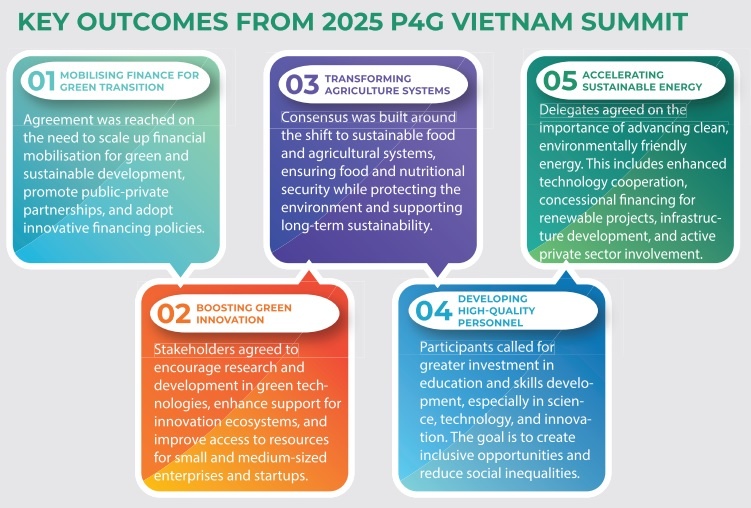 |
Dorado added that while multilateralism is being questioned or weakened in some quarters, the need for cooperation has never been more urgent – both to solve environmental challenges and to harness the transformative potential of innovation.
“No government or business can tackle these crises alone. Public authorities must provide the regulatory frameworks, fiscal incentives, and infrastructure deployment needed at scale to safeguard the common good,” he stressed.
From the business side, Stuart Livesey, country representative of Copenhagen Infrastructure Partners (CIP), provided a frank but optimistic outlook. Livesey stated CIP’s commitment to supporting Vietnam’s transition, but emphasised the need for enabling conditions.
“What we seek are clear, bankable projects underpinned by stable regulatory frameworks, collaborating with strong local partnerships. This is where public-private cooperation becomes not just helpful, but essential,” Livesey noted. “Over the next 10-15 years, the offshore wind sector and green energy consumers will trigger massive demand for new technologies, digital solutions, and skilled labour.”
To meet this demand, CIP is investing not only in infrastructure, but also in capacity building, research and development, and local supply chain development through partnerships with Vietnamese universities.
Still, he acknowledged barriers. “Technological application and innovation in green projects face challenges, from long-term financing constraints and skilled labour shortages to fragmented policy signals. These are not unique to Vietnam, but they require proactive, tailored local solutions,” he said. “Addressing issues such as grid availability, regulatory clarity, and inter-ministerial coordination will be critical.”
Tim Evans, CEO of HSBC Vietnam, stated that the banking sector is ready to facilitate green finance, particularly in sectors aligned with national climate targets.
“We see ourselves as a bridge between global capital and local sustainability goals. The clearer the pipeline of bankable, climate-aligned projects, the faster we can move capital,” he noted. “What’s crucial now is consistency in policy and coordination among stakeholders to ensure these projects reach maturity.”

Bac Giang International Logistics Centre launched

Vietnam’s Exclusive Economic Zone boasts over 1,000 GW of wind power potential: report

Uncertainty weighing on real estate

Central Vietnam city seeks $1.84 bln for 15 projects in economic zone

